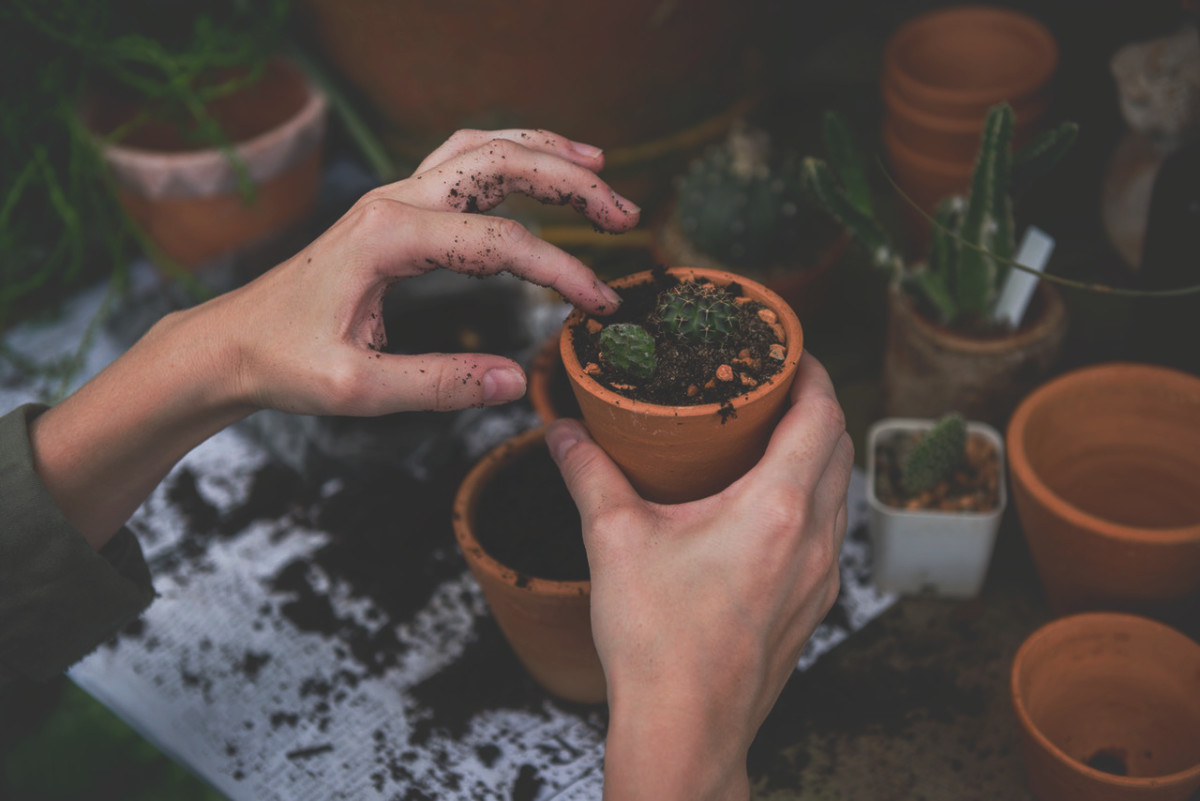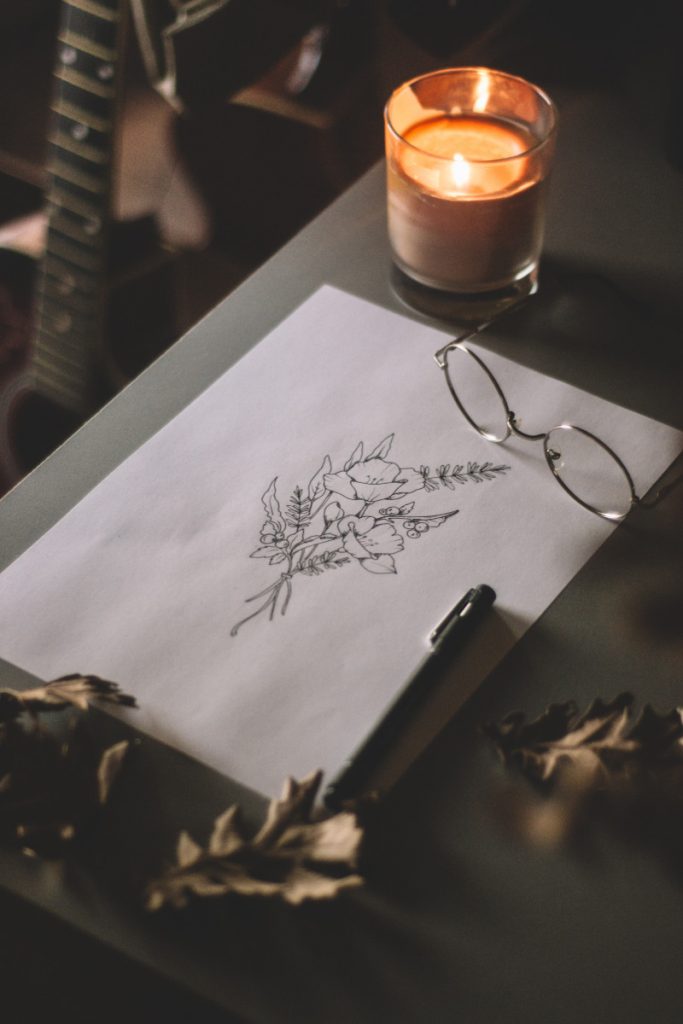
I recently starting learning about hand embroidery. I’m trying to expand my fiber arts repertoire so that I can explore more ways to make the kinds of clothing I want to make for myself. Embroidery seemed like a good skill to add since it can be used to transform would-be plain garments into something a little extra special.
Fortunately, I’m alive during a time where we have access to technology and communities that can help us learn pretty much anything we ever want to know. This gives us all the opportunity to try out any new skill or hobby we want. Just hop over to YouTube or Pinterest, punch in some keywords, and you’re presented with millions of free tutorials and examples of whatever you want to learn. I used a variety of tutorials to figure out the basics and got started on my very first embroidery project. I figured it would be fun to embroider a word onto a ball cap. In my head, this would look like the cute hats you see at places like Urban Outfitters. With a cheap denim cap and embroidery thread in hand, I set out to create my first hat with just the word “nope” on the front. Upon finishing my mini project, I was kind of disappointed with the outcome. I made a lot of mistakes along the way and I had to learn a few new skills on the fly in order to finish it. Yet I still wasn’t happy with the end product, simply because it didn’t match the vision I had in my head.
Why would it look as good as I imagined though? It was, after all, my very first embroidery project. I didn’t know what I was doing and I didn’t really practice anything beforehand. So where did that unrealistic expectation come from?
Like me with embroidery, you probably became inspired to try a new skill because you saw someone else who made beautiful work with it. You might follow them on social media and their work resonates with you. You may see an opportunity to better express your own feelings or thoughts through that particular medium. Whatever the reason you wanted to pick this new activity up, you want to jump right in and start making something awesome. The thing is though, you’re not going to be able to do exactly what your mind envisions right off the bat. You need to build the skillset necessary to execute your idea through learning the basics (a.k.a. the “boring” stuff).
I believe this problem with wanting to be perfect (or at least really good) as soon as you start a new pastime, spawns from living in a world where everyone likes to share their opinions. But you weren’t always this way. Everyone starts out being freely creative until they’re reeled in by grades, tests, and other educational and societal standards. When you were a little kid, you probably played with markers and crayons a lot. If you wanted to sit down and draw a picture of your pet cat, you just did it. You picked up your Crayola markers and just drew how your four year old brain thought Fluffy looked… Was it anywhere close to the real thing? Hell no. I mean, your cat drawing did have the right characteristics—pointy ears, four legs, and a tail—but it was nowhere near reality (cats aren’t really purple). This wasn’t an issue for you back then though. You didn’t strive for your cat drawing to look more realistic, you just liked that you had a picture of your kitty to show everyone.
“Every child is an artist. The problem is to remain an artist once they grow up.”
– Pablo Picasso
We carry this critical opinion of our creativity well into adulthood, but the ones you see still creating are simply ignoring that impulse. We’ve all heard someone say something like “Oh, I’m just not the creative type.” or “I could never draw/paint/dance/knit/etc.”. These people believe that the skills that artists have are ingrained in them from birth… And they’re right. Except they also explore the same creative reflexes as everyone else as a child. It’s all a matter of who keeps practicing those skills and who doesn’t. It can be difficult to continue practicing art when you don’t think it’s good enough or others critique your work. It’s definitely scary and leaves you feeling a bit vulnerable when you share your art with others. This is because art is very personal. Even if you’re just knitting a simple hat, you’re doing an activity that you really enjoy and showing people that hat is showing them a part of what makes you happy.
 Move Out of Your Own Way.
Move Out of Your Own Way.
What holds most people back from tapping back in to this child-like tendency is the act of creating for the wrong reasons. Some will devote to trying a new art form with the sole intention of making money from their efforts. They might see a store on Etsy that sells a particular item and think “I can do that!” and set off with visions of making all the sales in the world. While money is a fantastic motivator, it shouldn’t be the driving force behind why we practice art. That creates a situation where your art is reliant on how much money you make from it. Even if you really enjoy making a particular item, if it doesn’t sell well, you may prioritize making other items instead that sell better. This can create animosity for your craft where you don’t look forward to creating what is successful in making you money. This is where creating becomes a job and a chore rather than the self-expressive outlet it started out as.
This scenario can be the same for a variety of wrong reasons for practicing art. Maybe you’re motivated by recognition in a saturated medium. If you don’t gain that recognition for your work, you may think to yourself “what’s the point of continuing this if I’m not getting what I’m striving for?”. That mindset makes us resent our art and the act of creating.
Let Go Of Expectations
So how can we practice art and creating without falling into the downward spiral of these caveats? The key lies in balance and reducing your own self-criticism surrounding your art. While it’s amazing and perfectly fine to create with some intention of gaining recognition or money for your efforts, you need to stay humble and remember that it won’t always be a success—at first. If you’re a painter and trying to sell your paintings, don’t forget to create a few paintings that you have no intention of selling. Create something that you just feel like creating without the stress of it needing to be “market worthy”. Practicing this will help you to stay inspired and can even allow you to try out new ideas and skills with an unhindered mindset.
This is how children look at and treat art and creating. They don’t have the pressure or stress of needing their art to BE something, it’s just an exercise of their creative brain. When we tap in to this youthful act, it becomes easy to explore and learn something new with the intension of just expressing ourselves—even if we’re just expressing that internally.
Never Stop Learning, Trying, & Exploring
You should try new things (hobbies, skills, etc.) even if you suck at them. Always. Lots of people don’t try new things like painting or dancing because they think they wouldn’t be good at them… Well, duh. You wouldn’t—at least at first. Very few people are naturally good at their skills or hobbies. They may have a “knack” for it that helps them out, but they still have to go through the same beginning stages as everyone else.
No matter how much you suck at something, don’t make that the reason you quit at it. Everything takes practice and you’ll get to where you want to be if you keep trying. Other people’s opinions don’t matter unless you’re creating for the wrong reasons. Art is personal above all else. By allowing yourself to suck at your hobby, you will naturally become better at it and ultimately closer to where you want to be.
Further Reading:
When Did You Stop Being Creative?
Why Are Younger People More Creative?


